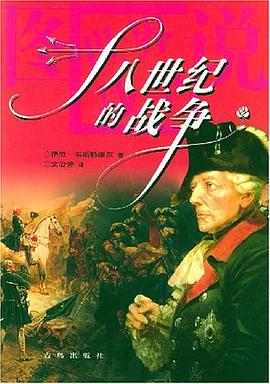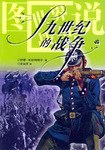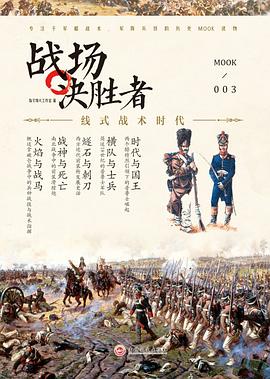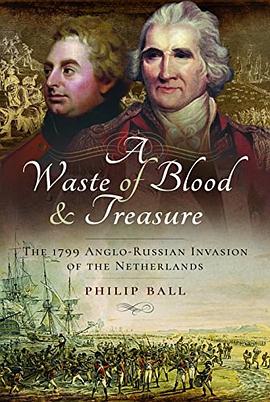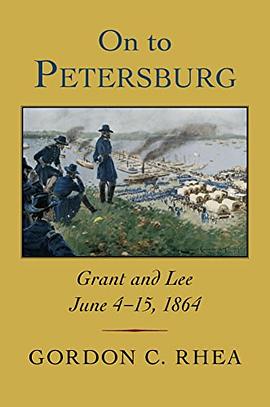近代战争
战场决胜者003:线式战术时代 豆瓣
作者:
指文烽火工作室
吉林文史出版社
2016
- 2
18世纪,随着燧发枪和刺刀这两项军事新发明在欧洲军队中的大量装备,火药武器终于彻底统治战场,常备军时代来临了。此后,手持燧发枪,排着整齐横队,在鼓点声中直面敌人炮火的线式步兵成为欧洲战场上的主力。欧洲人正是在线式战术时代,通过大北方战争、西班牙王位继承战争、四国联盟战争、波兰王位继承战争、奥地利王位继承战争、七年战争以及拿破仑战争的不断洗礼和冲击,才终于确立起了在全球领域内的军事霸权,并成为日后全世界争相效仿学习的典范。
Principles of War 豆瓣
作者:
Archduke Charles von Hapsburg
译者:
Daniel I. Radakovich
Nimble Books
2009
- 9
A Waste of Blood and Treasure 豆瓣
作者:
Philip Ball
Pen and Sword
2017
- 8
On to Petersburg 豆瓣
作者:
Gordon C. Rhea
LSU Press
2017
- 9
With On to Petersburg, Gordon C. Rhea completes his much-lauded history of the Overland Campaign, a series of Civil War battles fought between Generals Ulysses S. Grant and Robert E. Lee in southeastern Virginia in the spring of 1864. Having previously covered the campaign in his magisterial volumes on The Battle of the Wilderness, The Battles for Spotsylvania Court House and the Road to Yellow Tavern, To the North Anna River, and Cold Harbor, Rhea ends this series with a comprehensive account of the last twelve days of the campaign, which concluded with the beginning of the siege of Petersburg.
On to Petersburg follows the Union army’s movement to the James River, the military response from the Confederates, and the initial assault on Petersburg, which Rhea suggests marked the true end of the Overland Campaign. Beginning his account in the immediate aftermath of Grant’s three-day attack on Confederate troops at Cold Harbor, Rhea argues that the Union general’s primary goal was not―as often supposed―to take Richmond, but rather to destroy Lee’s army by closing off its retreat routes and disrupting its supply chains. While Grant struggled at times to communicate strategic objectives to his subordinates and to adapt his army to a faster-paced, more flexible style of warfare, Rhea suggests that the general successfully shifted the military landscape in the Union’s favor.
On the rebel side, Lee and his staff predicted rightly that Grant would attempt to cross the James River and lay siege to the Army of Northern Virginia while simultaneously targeting Confederate supply lines. Rhea examines how Lee, facing a better-provisioned army whose troops outnumbered Lee’s two to one, consistently fought the Union army to an impasse, employing risky, innovative field tactics to counter Grant’s forces.
Like the four volumes that preceded it, On to Petersburg represents decades of research and scholarship and will stand as the most authoritative history of the final battles in the campaign.
On to Petersburg follows the Union army’s movement to the James River, the military response from the Confederates, and the initial assault on Petersburg, which Rhea suggests marked the true end of the Overland Campaign. Beginning his account in the immediate aftermath of Grant’s three-day attack on Confederate troops at Cold Harbor, Rhea argues that the Union general’s primary goal was not―as often supposed―to take Richmond, but rather to destroy Lee’s army by closing off its retreat routes and disrupting its supply chains. While Grant struggled at times to communicate strategic objectives to his subordinates and to adapt his army to a faster-paced, more flexible style of warfare, Rhea suggests that the general successfully shifted the military landscape in the Union’s favor.
On the rebel side, Lee and his staff predicted rightly that Grant would attempt to cross the James River and lay siege to the Army of Northern Virginia while simultaneously targeting Confederate supply lines. Rhea examines how Lee, facing a better-provisioned army whose troops outnumbered Lee’s two to one, consistently fought the Union army to an impasse, employing risky, innovative field tactics to counter Grant’s forces.
Like the four volumes that preceded it, On to Petersburg represents decades of research and scholarship and will stand as the most authoritative history of the final battles in the campaign.
